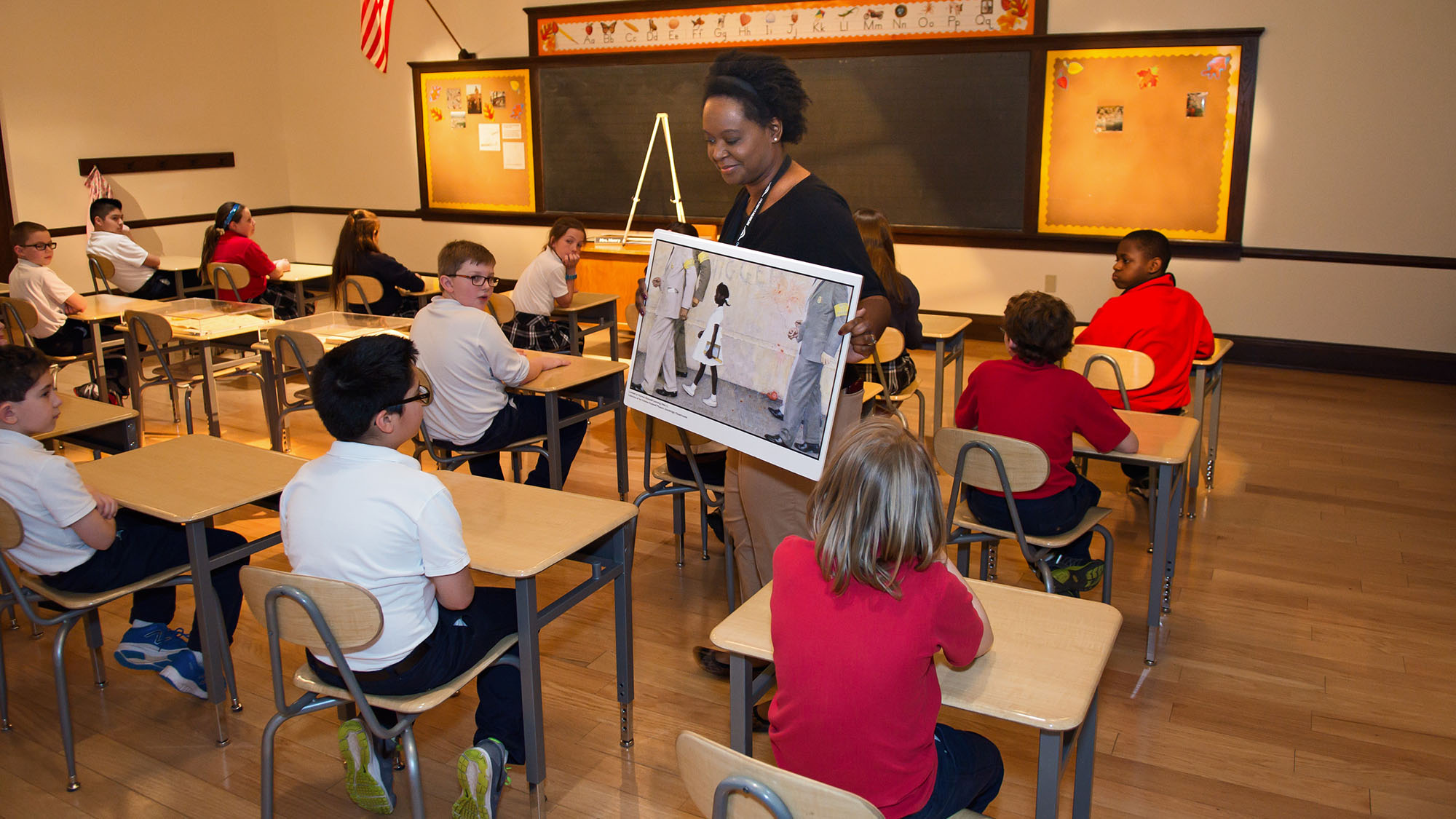Ruby Bridges and The Problem We All (Still) Live With
Ruby Bridges and The Problem We All (Still) Live With

“Two, four, six, eight, we don’t want to integrate!”
That’s what 6 year-old Ruby Bridges heard as she walked into William Frantz Elementary School in New Orleans, Louisiana, for the first time. It was 1960 and Ruby was the first Black child to attend an all-white elementary school in the state of Louisiana. Many people in Louisiana thought that Black children and white children should remain separated and should not attend school—or participate in any other activities—together.
This idea of separating people by the color of their skin is called segregation. We know this practice is wrong. People shouldn’t be judged by the color of their skin—that’s called racism. But in the first half of the twentieth century, legal segregation was in practice throughout much of the United States—even in schools. Laws kept Black people and white people apart and treated them differently. They weren’t even allowed to share the same drinking fountains.

“Whites-only” water fountain in The Power of ChildrenⓇ at The Children’s Museum
In 1954, a few months before Ruby was born, the U.S. Supreme Court made a landmark decision in Brown v. Board of Education, ruling that segregation of public schools violates the Constitution, ordering that schools begin to integrate as quickly as possible. When Ruby was 6 years old, she enrolled in William Frantz Elementary School as a first grader. On Nov. 14, 1960, U.S. marshals escorted Ruby and her mother for her first day of school.
Ruby Bridges was the first Black child to attend William Frantz. In fact, she was the first Black child to attend any all-white school in the South. She was also the only Black child to attend William Frantz Elementary that year.
Ruby’s action inspired change
Ruby’s first day at her new school was anything but fun. Angry people who supported segregation gathered outside of her school. They shouted at her. They held protest signs. They threw things. They threatened her. They tried to block Ruby from entering the school building. White parents even kept their children home from school that day.

Exterior of the Ruby Bridges gallery inside The Power of Children® at The Children’s Museum
On Ruby’s second day of school, she met her first grade teacher, Barbara Henry. She sat next to Ruby in an empty classroom and taught her one-on-one. Ruby stayed in that classroom all day long. She couldn’t go to the cafeteria or play outside with the other children. Going to the restroom required an escort by U.S. marshals. This was Ruby’s classroom arrangement for the entire school year.
Neither Ruby nor Mrs. Henry missed a day of school that year. This took an incredible amount of bravery from Ruby. It wasn’t always easy. This little 6 year-old girl pressed through intense pressure. Through her actions, Ruby helped pave the way for the civil rights movement.
You can visit a re-creation of Ruby’s classroom in The Power of Children: Making a Difference® at The Children’s Museum. Before entering her gallery, you have to walk through a display of angry protesters. It’s a powerful experience that gives you a small taste of the opposition Ruby faced.
The problem we all (still) live with
A few years after Ruby entered William Frantz Elementary School, Norman Rockwell captured Ruby’s story in the painting The Problem We All Live With.

A copy of Norman Rockwell’s painting is on display in The Power of Children® at The Children’s Museum
Segregated schools, water fountains, and public places are against the law now but racism continues in the United States. Some people continue to treat other people differently because of the color of their skin.
But we can do something about this—together. Families can begin making a difference today, and that will impact our future. Ruby Bridges once said, “Racism is a grown-up disease and it is time we stop using kids to spread it.” She has also said, “Somebody has to have courage enough to stand up, to make a change.”

Do you have the courage to stand up? Sure you do! Here are two action steps you can do to start making a change in our world:
1. Speak up. When you see someone being treated unfairly, speak up. Silence allows racism and discrimination to continue. Use your voice to speak up against racism. It might be uncomfortable, but it’s an important step to take.
2. Be a friend. Ruby spent her first year at William Frantz Elementary School in a classroom with just one person—her teacher. Racism keeps people separated. Being friends with someone different from you can help change the world.
It might even open your eyes, too.

As we remember and honor Ruby’s story, let’s continue the work that she did. We can make sure that no child is ever judged by the color of their skin. When given a choice, always choose acceptance over racism, unity over division, and love over hate.









